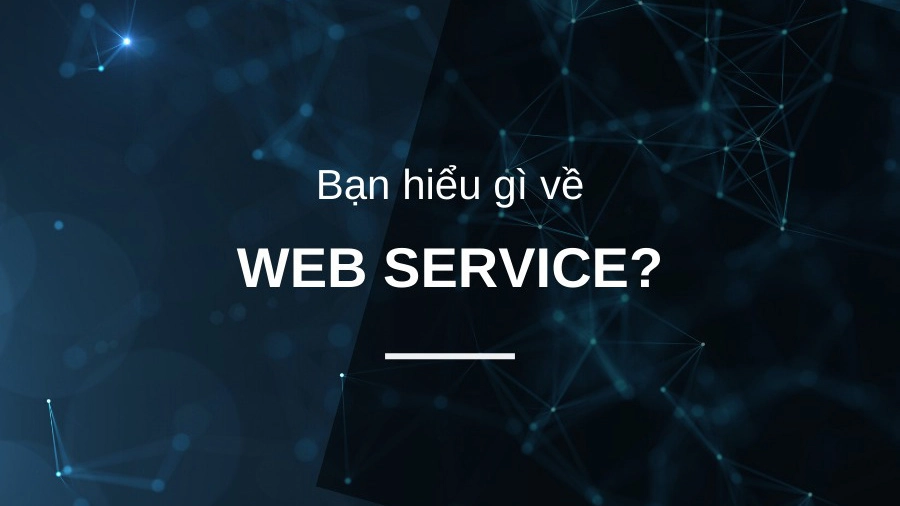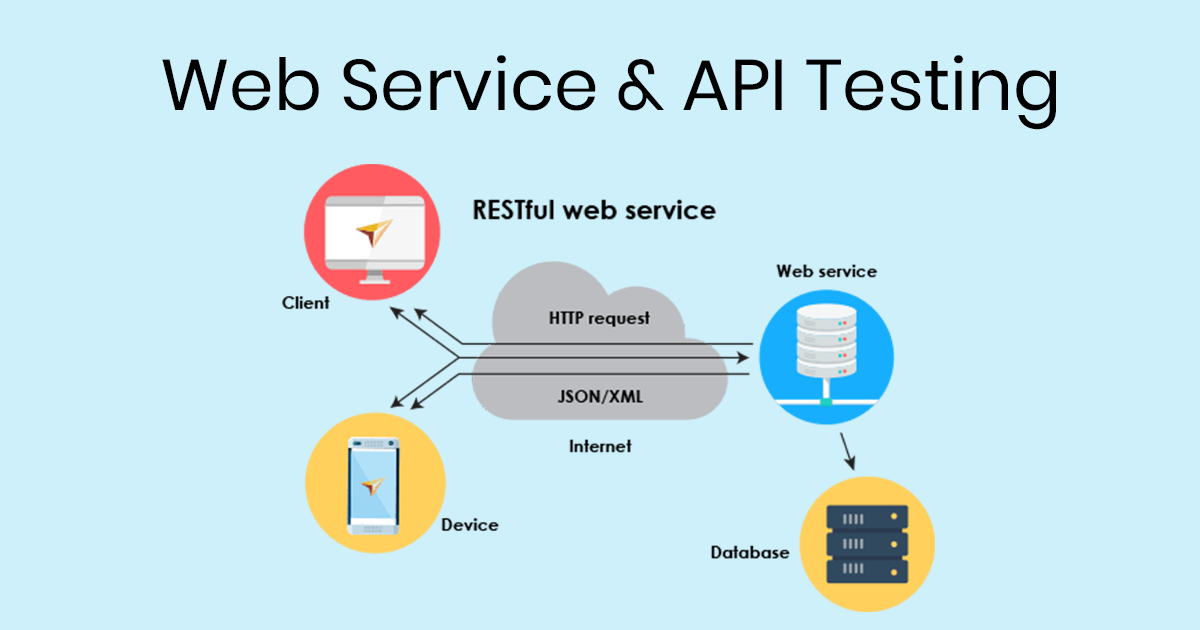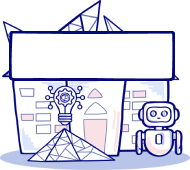
Web Services can range from primary services such as hosting or customer relationship management (CRM) to much more limited services such as providing stock quotes or checking bids for a auction items. This term is also sometimes referred to as an application service.

Today, you can’t mention the term “Web Service” without immediately conjuring up references to Amazon’s Web Service or Google’s Web Service, Google Cloud Platform. However, despite all its technological advancements, Web Service processes and testing are still complex concepts.
So What is Web Service? What role does this concept play? Let’s find out with Techzen through the article below!
What is Web Service?
First, what is Web Service? Web Service or web service a type of Internet software that uses standardized messaging protocols and is made available from the application service provider’s web server for use by customers or other web-based programs. use.

Users can access some Web Services through a peer-to-peer arrangement instead of accessing a central server. Some services can communicate with other services. This exchange of procedures and data is usually enabled by a type of software known as middleware.
The development of Web Services occurred when all major platforms could access the internet, but different platforms could not interact with each other. Web Services have been able to take platforms to the next level by publishing functions, messages, programs or objects to the rest of the internet.
Read more: What is Bitbucket? Know It All About Bitbucket
Common types of Web Services
There are several common types of Web Services including:
- XML-RPC (Remote Procedure Call) is the most basic XML protocol for exchanging data between various types of devices. It uses HTTP to transfer data and other information quickly and easily from client to server.
- UDDI (General Description, Discovery, and Integration) is an XML-based standard for detailing, publishing, and discovering Web Services. It’s basically the internet registry for businesses around the world. The goal is to streamline digital transactions and e-commerce between the company’s systems.
- SOAP is an XML-based Web Service protocol for exchanging data and documents over HTTP or SMTP (Simple Mail Transfer Protocol). It allows independent processes operating on different systems to communicate using XML.
- REST provides communication and connectivity between devices and the internet for API-based tasks. Most RESTful services use HTTP as their backing protocol.
How Web Services work
The diagram below depicts a very simplified version of how a Web Service works. The client will request to send a sequence of web service calls to a server that hosts the actual web service.
Remote procedure calls are what are used to make these requests. Calls to the methods hosted by the related Web Service are called Remote Procedure Calls (RPC). For example, Flipkart provides a web service that displays prices for items offered on Flipkart.com. The user interface or presentation layer can be written in .Net or Java, but the Web Service can be interfaced in either programming language.
The data that is exchanged between the client and the server, is XML, and is the most important part of Web Service design. XML (Extensible Markup Language) is a simple intermediate language understood by many different programming languages. It is a copy of HTML. When programs communicate with each other, they use XML. This creates a common platform for applications written in different programming languages to communicate with each other.
To pass XML data between applications, web services use SOAP (Simple Object Access Protocol). Data is sent using standard HTTP. SOAP messages are data sent from the Web Service to the application. An XML document is all that is contained in a SOAP message.
Components of a Web Service
XML and HTTP are the most basic Web Service platforms. The following components are used by all typical Web Services:
SOAP (Simple Object Access Protocol)
SOAP stands for “Simple Object Access Protocol”. It is a transport-independent messaging protocol. SOAP is built on top of sending XML data as SOAP Messages. A document called an XML document is attached to each message. Only the structure of the XML document, not the content, and follows a pattern. The best thing about Web Services and SOAP is that everything is sent over HTTP – the standard web protocol.
UDDI (General Description, Discovery and Integration)
UDDI is a standard for specifying, publishing, and discovering service provider online services. It provides a specification that supports data storage through Web Services. UDDI provides a repository where WSDL files can be stored so that client applications can explore the WSDL file to learn about the various actions the Web Service provides. As a result, the client will have full access to UDDI, which serves as the database for all WSDL files.
The UDDI registry will keep the information necessary for the online service, like a phone book, which includes the name, address, and phone number of a given individual.
WSDL (Web Service Description Language)
If the Web Service is not found, its service cannot be used. The client calling the Web Service must know the location of the Web Service. In addition, the client application must understand what the Web Service does in order to properly call the Web Service. WSDL, or Web Service Description Language, is used to accomplish this. The WSDL file is another XML-based file that explains the Web Service’s functionality to the client application. The client application will be able to understand where the Web Service is and how to use it using the WSDL document.
Advantages and challenges of using Web Services
Advantages of Web Services:
- Expose business functionality to the network – A Web Service is a managed unit of code that provides some kind of functionality to a client application or end user. This function can be called over the HTTP protocol which means it can also be called over the internet. Nowadays all applications are available on the internet, which makes the purpose of Web Services more useful. That means the Web Service can be anywhere on the internet and provide the required functionality on demand.
- Interoperability between applications – Web services allow different applications to communicate with each other and share data and services with each other. So instead of writing specific code that only specific applications can understand, you can now write generic code that all applications can understand.
- Standardized protocol that everyone understands – Web Services use standardized industry protocols for communication. All four layers (Service Transport, XML Messaging, Service Description, and Service Discovery classes) use well-defined protocols in the Web Service protocol stack.
- Lower communication costs – Web Services use SOAP over HTTP, so you can use your existing low-cost internet to deploy Web Services.
Web Service Challenges: As Web Services evolve, concerns include the overall need for network bandwidth, and for any particular service, impacting performance as demand for the service grows. the case increased. Several new products have emerged that allow software developers to create or modify existing applications that can be published as web-based applications.
Difference between API and Web Service

Web Services and APIs are often confused with each other, which is not surprising since they have certain things in common. Most Web Services provide an API, with its set of commands and functions, used to retrieve data. Here’s an example: Twitter provides an API that allows developers to access tweets from a server, then collect the data in JSON format.
But here’s something to keep in mind: All Web Services can be APIs, but not all APIs can be Web Services. Difference between API and Web Service:
- The API can be hosted in the application or IIS (Internet Information Services), but the Web Service can only be hosted on IIS.
- Web Service is not open source and is used to understand JSON (JavaScript Object Notation) or XML, while the API is open source and used only for XML.
- The API is a lightweight architecture (best for devices with limited bandwidth (e.g. smartphones) Web Services are not lightweight architectures because they require SOAP to send and receive network data.
- The API can use any form of communication, but the Web Service only uses SOAP, REST and XML-RPC.
- The API supports URLs, request/response headers, caching, versioning, content formats. Web Services only support HTTP.
Similarities between API and Web Service:
- Both are accessed via HTTP/HTTPS to allow communication between the service provider and the client.
- Both call a function, process the data and get the response.
Application of Web Service
Web Services are used for many applications, but the most common is to reuse code and connect existing programs.
The Web Service approach can help developers segment applications into components that can be used and reused for different needs. For example, many programs may need a converter or reporting functionality. This is made possible by common Web Service communication protocols.
In addition, Web Services can be used to link data between different platforms. Since all applications can include a Web Service component, this can turn any particular program into a fully interactive program.
Conclude
So Techzen has learned with you what is Web Service and the basic information about web services. Hopefully the above knowledge will help you have a more general view of Web Services. If you are interested in similar content, stay tuned for more interesting articles on Techzen blog!

































